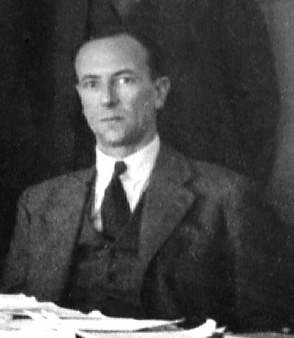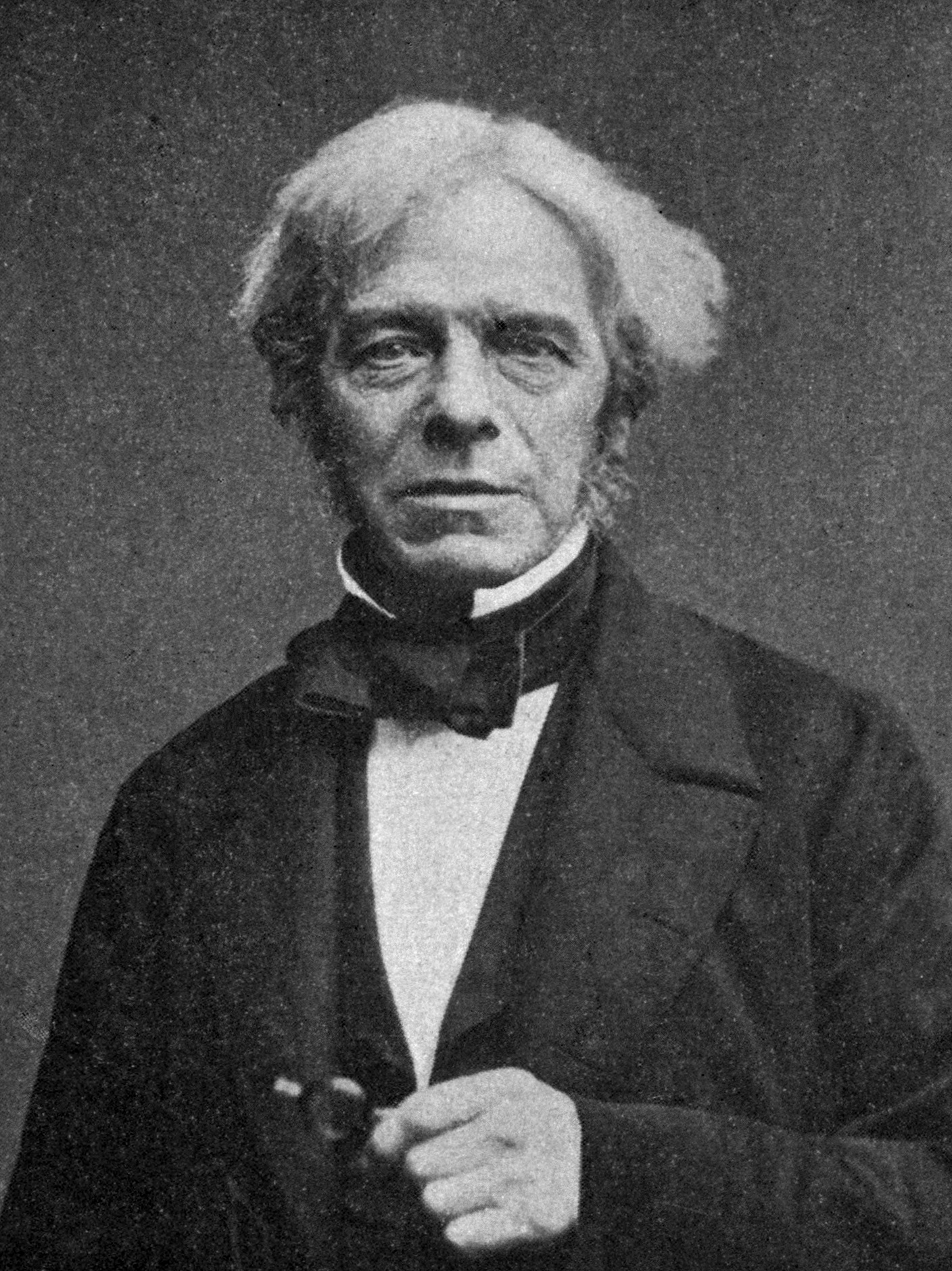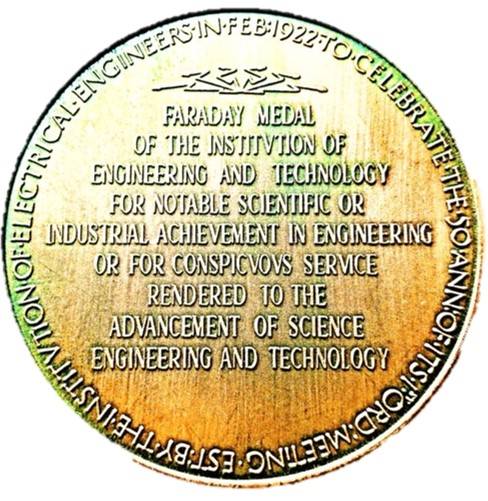|
Sir James Chadwick
Sir James Chadwick, (20 October 1891 – 24 July 1974) was an English physicist who was awarded the 1935 Nobel Prize in Physics for his discovery of the neutron in 1932. In 1941, he wrote the final draft of the MAUD Report, which inspired the U.S. government to begin serious atom bomb research efforts. He was the head of the British team that worked on the Manhattan Project during World War II. He was knighted in Britain in 1945 for his achievements in physics. Chadwick graduated from the Victoria University of Manchester in 1911, where he studied under Ernest Rutherford (known as the "father of nuclear physics"). At Manchester, he continued to study under Rutherford until he was awarded his MSc in 1913. The same year, Chadwick was awarded an 1851 Research Fellowship from the Royal Commission for the Exhibition of 1851. He elected to study beta radiation under Hans Geiger in Berlin. Using Geiger's recently developed Geiger counter, Chadwick was able to demonstrate ... [...More Info...] [...Related Items...] OR: [Wikipedia] [Google] [Baidu] |
Bollington
Bollington is a town and civil parish in Cheshire, England, to the east of Prestbury. In the Middle Ages, it was part of the Earl of Chester's manor of Macclesfield and the ancient parish of Prestbury. In 2011, it had a population of 8,310. Bollington is on the River Dean and the Macclesfield Canal, on the south-western edge of the Peak District. Rising above the town on Kerridge Hill is White Nancy, a monument built to commemorate the Battle of Waterloo. History From the late 18th through to the mid-20th centuries, Bollington was a major centre for cotton-spinning. Waterhouse mill, now demolished, off Wellington Road, once spun the finest cotton in the world, and was sought after by lace makers in Nottingham and in Brussels, Belgium. Clarence Mill still stands. The lower floors remain commercial but the upper floors have been converted into apartments. One of the oldest surviving mills in Bollington is the very small Defiance Mill, built in Queen Street about 1800 and now ... [...More Info...] [...Related Items...] OR: [Wikipedia] [Google] [Baidu] |
Fellow Of The Royal Society
Fellowship of the Royal Society (FRS, ForMemRS and HonFRS) is an award granted by the judges of the Royal Society of London to individuals who have made a "substantial contribution to the improvement of natural science, natural knowledge, including mathematics, engineering science, and medical science". Fellow, Fellowship of the Society, the oldest known scientific academy in continuous existence, is a significant honour. It has been awarded to many eminent scientists throughout history, including Isaac Newton (1672), Michael Faraday (1824), Charles Darwin (1839), Ernest Rutherford (1903), Srinivasa Ramanujan (1918), Albert Einstein (1921), Paul Dirac (1930), Winston Churchill (1941), Subrahmanyan Chandrasekhar (1944), Dorothy Hodgkin (1947), Alan Turing (1951), Lise Meitner (1955) and Francis Crick (1959). More recently, fellowship has been awarded to Stephen Hawking (1974), David Attenborough (1983), Tim Hunt (1991), Elizabeth Blackburn (1992), Tim Berners-Lee (2001), Venki R ... [...More Info...] [...Related Items...] OR: [Wikipedia] [Google] [Baidu] |
World War II
World War II or the Second World War, often abbreviated as WWII or WW2, was a world war that lasted from 1939 to 1945. It involved the vast majority of the world's countries—including all of the great powers—forming two opposing military alliances: the Allies and the Axis powers. World War II was a total war that directly involved more than 100 million personnel from more than 30 countries. The major participants in the war threw their entire economic, industrial, and scientific capabilities behind the war effort, blurring the distinction between civilian and military resources. Aircraft played a major role in the conflict, enabling the strategic bombing of population centres and deploying the only two nuclear weapons ever used in war. World War II was by far the deadliest conflict in human history; it resulted in 70 to 85 million fatalities, mostly among civilians. Tens of millions died due to genocides (including the Holocaust), starvation, mas ... [...More Info...] [...Related Items...] OR: [Wikipedia] [Google] [Baidu] |
Atom Bomb
A nuclear weapon is an explosive device that derives its destructive force from nuclear reactions, either fission (fission bomb) or a combination of fission and fusion reactions (thermonuclear bomb), producing a nuclear explosion. Both bomb types release large quantities of energy from relatively small amounts of matter. The first test of a fission ("atomic") bomb released an amount of energy approximately equal to . The first thermonuclear ("hydrogen") bomb test released energy approximately equal to . Nuclear bombs have had yields between 10 tons TNT (the W54) and 50 megatons for the Tsar Bomba (see TNT equivalent). A thermonuclear weapon weighing as little as can release energy equal to more than . A nuclear device no larger than a conventional bomb can devastate an entire city by blast, fire, and radiation. Since they are weapons of mass destruction, the proliferation of nuclear weapons is a focus of international relations policy. Nuclear weapons have been deployed ... [...More Info...] [...Related Items...] OR: [Wikipedia] [Google] [Baidu] |
Discovery Of The Neutron
The discovery of the neutron and its properties was central to the extraordinary developments in atomic physics in the first half of the 20th century. Early in the century, Ernest Rutherford developed a crude model of the atom, based on the gold foil experiment of Hans Geiger and Ernest Marsden. In this model, atoms had their mass and positive electric charge concentrated in a very small nucleus. By 1920 chemical isotopes had been discovered, the atomic masses had been determined to be (approximately) integer multiples of the mass of the hydrogen atom, and the atomic number had been identified as the charge on the nucleus.Byrne, J. ''Neutrons, Nuclei, and Matter'', Dover Publications, Mineola, New York, 2011, Throughout the 1920s, the nucleus was viewed as composed of combinations of protons and electrons, the two elementary particles known at the time, but that model presented several experimental and theoretical contradictions. The essential nature of the atomic nucleus w ... [...More Info...] [...Related Items...] OR: [Wikipedia] [Google] [Baidu] |
Physicist
A physicist is a scientist who specializes in the field of physics, which encompasses the interactions of matter and energy at all length and time scales in the physical universe. Physicists generally are interested in the root or ultimate causes of phenomena, and usually frame their understanding in mathematical terms. Physicists work across a wide range of research fields, spanning all length scales: from sub-atomic and particle physics, through biological physics, to cosmological length scales encompassing the universe as a whole. The field generally includes two types of physicists: experimental physicists who specialize in the observation of natural phenomena and the development and analysis of experiments, and theoretical physicists who specialize in mathematical modeling of physical systems to rationalize, explain and predict natural phenomena. Physicists can apply their knowledge towards solving practical problems or to developing new technologies (also known as applie ... [...More Info...] [...Related Items...] OR: [Wikipedia] [Google] [Baidu] |
Order Of The Companions Of Honour
The Order of the Companions of Honour is an order of the Commonwealth realms. It was founded on 4 June 1917 by King George V as a reward for outstanding achievements. Founded on the same date as the Order of the British Empire, it is sometimes regarded as the junior order to the Order of Merit. The order was originally intended to be conferred upon a limited number of persons for whom this special distinction seemed to be the most appropriate form of recognition, constituting an honour disassociated either from the acceptance of title or the classification of merit. It is now described as being "awarded for having a major contribution to the arts, science, medicine, or government lasting over a long period of time". The first recipients of the order were all decorated for "services in connection with the war" and were listed in ''The London Gazette''. Composition The order consists of the monarch of the Commonwealth realms, who is the Sovereign of the Order of the Companions ... [...More Info...] [...Related Items...] OR: [Wikipedia] [Google] [Baidu] |
Guthrie Medal And Prize
The Michael Faraday Medal and Prize is a gold medal awarded annually by the Institute of Physics The Institute of Physics (IOP) is a UK-based learned society and professional body that works to advance physics education, research and application. It was founded in 1874 and has a worldwide membership of over 20,000. The IOP is the Physica ... in experimental physics. The award is made "for outstanding and sustained contributions to experimental physics." The medal is accompanied by a prize of £1000 and a certificate. Historical development * 1914-1965 Guthrie Lecture initiated to remember Frederick Guthrie, founder of the Physical Society of London, Physical Society (which merged with the Institute of Physics in 1960). * 1966-2007 Guthrie Medal and Prize (in response to changed conditions from when the lecture was first established). From 1992, it became one of the Institute's Premier Awards. * 2008–present Michael Faraday Medal and Prize Medalists and lecturer ... [...More Info...] [...Related Items...] OR: [Wikipedia] [Google] [Baidu] |
Franklin Medal
The Franklin Medal was a science award presented from 1915 until 1997 by the Franklin Institute located in Philadelphia, Pennsylvania, U.S. It was founded in 1914 by Samuel Insull Samuel Insull (November 11, 1859 – July 16, 1938) was a British-born American business magnate. He was an innovator and investor based in Chicago who greatly contributed to create an integrated electrical infrastructure in the United States .... The Franklin Medal was the most prestigious of the various awards presented by the Franklin Institute. Together with other historical awards, it was merged into the Benjamin Franklin Medal, initiated in 1998. Laureates Recipients are listed in a database on The Franklin Institute website. References {{reflist, 30em External links The Franklin Institute Awards Franklin Institute awards ... [...More Info...] [...Related Items...] OR: [Wikipedia] [Google] [Baidu] |
Faraday Medal
The Faraday Medal is a top international medal awarded by the UK Institution of Engineering and Technology (IET) (previously called the Institution of Electrical Engineers (IEE)). It is part of the IET Achievement Medals collection of awards. The medal is named after the famous Michael Faraday FRS, the father of electromagnetism. Faraday is widely recognized as a top scientist, engineer, chemist, and inventor. His electromagnetic induction principles have been widely used in electric motors and generators today. Background The Faraday medal is the IET's highest honour and one of the world's most prestigious awards for engineers and scientists. Winners include ground-breaking pioneers and inventors. First awarded in 1922, it is one of the oldest medals still being awarded today. The top medal is awarded annually to distinguished individuals who either for notable scientific or industrial achievement in engineering or for conspicuous service rendered to the advancement of science, ... [...More Info...] [...Related Items...] OR: [Wikipedia] [Google] [Baidu] |
Copley Medal
The Copley Medal is an award given by the Royal Society, for "outstanding achievements in research in any branch of science". It alternates between the physical sciences or mathematics and the biological sciences. Given every year, the medal is the oldest Royal Society medal awarded and the oldest surviving scientific award in the world, having first been given in 1731 to Stephen Gray (scientist), Stephen Gray, for "his new Electrical Experiments: – as an encouragement to him for the readiness he has always shown in obliging the Society with his discoveries and improvements in this part of Natural Knowledge". __TOC__ History The medal was created following a donation of Pound sterling, £100 to be used for carrying out experiments by Sir Godfrey Copley, 2nd Baronet, Sir Godfrey Copley, for which the interest on the amount was used for several years. The conditions for the medal have been changed several times; in 1736, it was suggested that "a medal or other honorary prize s ... [...More Info...] [...Related Items...] OR: [Wikipedia] [Google] [Baidu] |
Melchett Medal
The Melchett Award is an honour awarded by the Energy Institute for outstanding contributions to the science of fuel and energy. It was created by and named for Alfred Moritz Mond, 1st Baron Melchett, the 20th century businessman and philanthropist. Winners Source: *1930: Kurt Rummell *1931: W. A. Bone *1932: Charles M. Schwab *1933: John Cadman *1934: Friedrich Bergius *1935: Harry R. Ricardo *1936: Franz Fischer *1937: Morris W. Travers *1938: R.V. Wheeler *1939: H.A. Humphrey *1940: Étienne Audibert *1941: Clarence A. Seyler *1942: Arno C. Fieldner *1943: E S Grumel *1944: J.G. King *1945: C H Lander *1946: Sir James Chadwick *1947: Kenneth Gordon *1949: Sir Frank Whittle *1950: R.J. Sarjan *1951: F.H. Garner *1952: D.T.A. Townend *1953: H. Hartley *1954: H.H. Storch *1955: A. Parker *1956: Sir Alfred Egerton *1957: Sir Christopher Hinton *1959: P.O. Rosin *1960: H.C. Hottel *1961: Sir Harold Hartley (award to MacFarlane): MacFarlane Memorial Lecture *19 ... [...More Info...] [...Related Items...] OR: [Wikipedia] [Google] [Baidu] |








